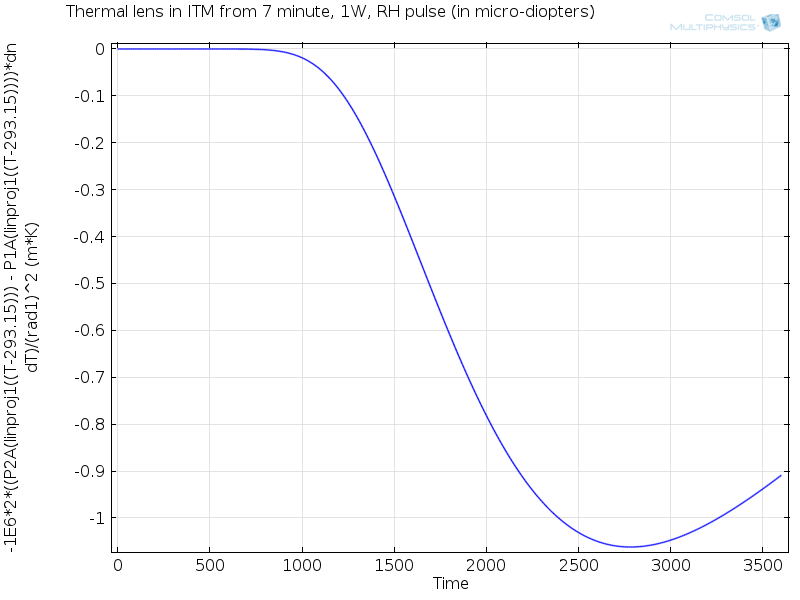Evan, Stefan
We fine-tuned the MICH correction todonight.
- Added the SB300vio BS violin stop band filter to MICH_FF to cancel their effect.
- Measured MICHFF_OUT to DARM_IN twice:
1) drive disconnected at the ITMY. This measures the MICH_OUT to DARM_IN path.
2) MICH_FF input off, driving MICH_FF. This measures the MICHFF_OUT to DARM_IN path.
This data is in plot 1.
- 1)/2) is the desired filter, shown in plot 2.
- Finally, we used a p:60:z:80 filter to fine-tune the phase a bit. (Plot 3) This significantly improved the achievable subtraction.
Attached is a comparison of the three different FF states (no FF, FI FF, and FD FF). DTT file is in my folder under Public/2015/05/Feedforward/MichFf.xml.
Attempting to print these plots as a pdf caused DTT to crash. :(
On a different note, we also tried briefly punching the ITM ring heaters (upper and lower) to 0.5 W each to see if we could do anything about the drift in POP90. I turned them on at 2015-05-13 10:56:20 Z, and then off again at 11:03:15 Z. The interferometer unlocked about 20 minutes later, we don't have enough data to say whether this helps or hurts.
I calculated the thermal lens response of the ITM to this 7-minute ring heater pulse (see attached image). After 7-minutes of heating and a further 20 minutes of waiting the total thermal lens in the ITM is around -5E-7 diopters, or an additional 0.2m added to the radius of curvature. It's unlikely this had any noticable effect.
Note: the glass elements of the RH have a time constant, tau, of around 7 minutes. That is, the power radiated to the test mass from the RH is roughly P_elec*(1-exp(-t/tau)) and P_elec is the electrical power requested.





